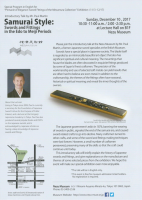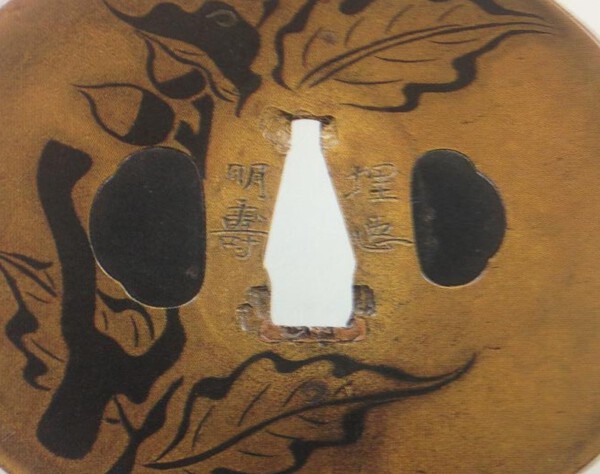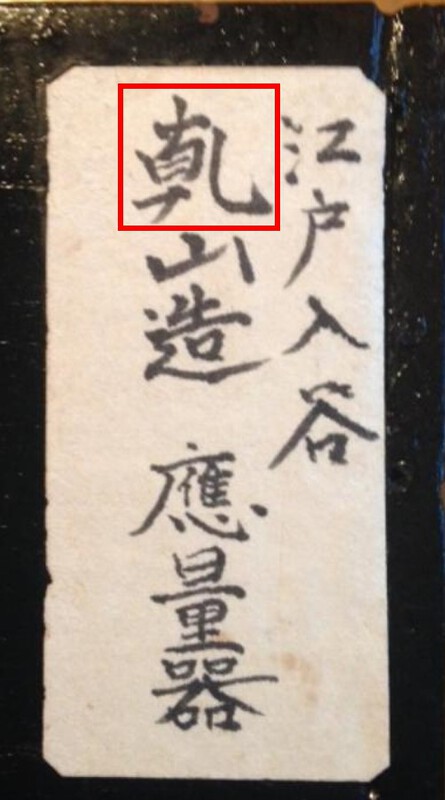-
Posts
1,813 -
Joined
-
Last visited
-
Days Won
8
Everything posted by Henry Wilson
-
Thank you for the interesting post Ford. It got me thinking and as a result I re-visited my library and found the two related articles below. I wonder if the development of brass was connected to the search for precious metals. The first article (China’s emerging demand and development of a key base metal: Zinc in the Ming and early Qing, c. 1400–1680s) seems to suggest this as at the top of p. 178 it states that calamine (zinc bearing ore) was connected to the search for artificial gold and silver. Could the so-called great depression of the 15th century started all this? I hope you don't mind asking these questions to help me digest your post. Zinc in the Ming and early Qing.pdf Time, Money, and the Weather Ming China and the Great Depression of the Mid Fifteenth Century.pdf
-
Interesting. I was going to say a kite (alluding to tako-age; New Year kite flying) because I thought it was something like a toy, even though it doesn't look like a kite. You live and learn. Many thanks Ford.
-
Considering the box shape of both the kozuka-ana, I would say that the nakago-ana has been styled in their image for whatever reason. Maybe as a presentation piece? There is a certain Namban feel to the nakago-ana too
-
I must say Peter, you find great articles. Please keep sharing!
-
On the reverse I see "kadomstsu" on a water well. A “ kadomatsu,” or “gate pine,” is a traditional Japanese New Year’s decoration. They are placed in pairs in front of homes in order to welcome ancestral spirits or gods of the harvest. Kadomatsu are considered temporary housing for these spirits and are typically made of pine and bamboo sprigs. The object on the front is not so obvious to me. Could it be an "omamori", an amulet for protection picked up during "hatsumode"?
-
Yes, that seems to be the conventional wisdom. My point is, regardless of whether cast iron or forged, russet appears to be the same thing, which is a patinated worn surface effect. How it is obtained seems to be a means to an end.
-
I would not say that russet iron is necessarily treated. I would identify the russet effect as variations of a rough, rustic austerity as seen below. Rough and ready Smooth and slinky Check out tea ceremony kettles, especially Tenmyo and to a lesser extent Ashiya, for (what I would call) classic examples of russet iron. An interesting write up is at the link. http://www.mtlo.co.jp/us/valueone/metal/sano/sano.html
-
Steve has it right. 東雨 an art name of the Tsuchiya Yasuchika. Nice work but probably not by the man himself IMHO.
-

Saya Beginner's Question
Henry Wilson replied to EdWolf's topic in General Nihonto Related Discussion
Very interesting Guido. Thank you for the link and information. I have never been able to get a satisfactory explanation for that pattern until now. Where do you get all your knowledge from? -

Saya Beginner's Question
Henry Wilson replied to EdWolf's topic in General Nihonto Related Discussion
A design also found on modern kendo bags for some reason. I recall something somewhere that illustrates the design on a fuchi. Maybe by Fred Geyer in a KTK catalog? I am at work so cannot check my bibliothèque. -
Very sad news. His Koza Tosogu translation was one of the first books I bought on fittings, which he signed. Rest in Peace.
-
Unless there is a legend or story that the motif is representing, it could be a potter preparing clay by operating a mallet. The following link might explain what I mean: http://morningearthkorea.com/the-choson-potters-studio-and-kiln/
-
That was fun. Thanks for sharing. PS. I loved the feet on the table with the swords sitting next to them. Such a no-no here...
-

Dti Side Show
Henry Wilson replied to Henry Wilson's topic in Sword Shows, Events, Community News and Legislation Issues
I managed to get to the Nezu museum yesterday to see the Pinnacle of Elegance display. Before, I have never been that interested in soft metal fittings, but the display has gone a long way to change that. This is because the variety of extremely good items was very impressive and over whelming in size and quality. Most of the work displayed was commissioned around the Meiji period as a way for the original owner of the collection (Mitsumura Toshimo) to encourage the continuation of the crafts after the abolishment of samurai swords. The focus is mainly on soft metal, the most noticeable to me was the Goto School, Kano Natsuo, Otsuki, the Tanaka School to name but a few. There are many more artists represented from various locations in Japan (too many to list) and I have only mentioned the artists that I am tentatively familiar with. Personal highlights were two excellent Nobuie tsuba at the start of the display. Some remarkable Yasuchika work peppered the display too as did work by Kano Natsuo. Excellent swords were also present, the most noticeable to me were two Hiromitsu wakizashi and a small Umetada tanto as well as a Gassan or two. The koshirae were exquisite, however the polished ray skin scabbard koshirae in the catalog were not displayed, which was the only minor disappointed. Monocles (single eye looking devices) can be rented at the entrance so that it is possible to have a really close look at the workmanship. This I think could result in you getting lost in each individual item so be warned! As a bonus, the garden was also at its best for the autumn colours. I intend to return on the 10th December for Paul Martin’s lecture. I have to work in the morning so hope to catch the 2:00 pm session. Hope to see you then! -
-
I must apologize for my absence from the DTI for a number of years. I have been in hibernation for a while; mainly, due to a postgraduate course that I was doing while working full-time. Another reason is that the dates tend to clash with my annual visit to Okutama, to enjoy koyo (the autumn leaves). The good news is that my masters is complete so, all being well, I might be able to make it to Shinagawa for the 2018 gathering. I could bring my wife too, dressed in her favourite kimono! She has never been on a yakatabune or met Bob, Guido and their shipmates so she might well be tempted. We could call it "Wilson's come back tour 2018" Something for us all to look forward to
-

Collecting High Quality Reference Images
Henry Wilson replied to Nihontocollector19's topic in Tosogu
Uchigatana Goshirae is a must. http://www.japaneseswordbooksandtsuba.com/store/books/b734-uchigatana-koshirae-translation-tokyo-national-museum Check this reference, from p. 262 https://www.nga.gov/research/publications/pdf-library/Japan-the-shaping-of-daimyo-culture.html KTK catalog 3 if you can find it. http://www.japaneseswordbooksandtsuba.com/store/books/b722-kokusai-tosogu-kai-3rd-convention -
Many thanks John. It is a 應量器 OORYOOKI (I think). A begging bowl. I will try to get a picture of the actual bowl this weekend. https://terebess.hu/zen/szoto/oryoki.html
-
-
Thanks Curran. Very helpful. If I could I would give you a hug
-
The pictures look like the inlay is quite decayed and the iron relatively intact. Is the worn effect intentional? A kind of applied wabi-sabi?
-
Many thanks to everyone. Lots of reading to do. Regarding the report by Stefan Mäder posted by Jean C., the diagrams on p. 91, 93, 96 and 98 are excellent as to me they effectively illustrate the subtle details of sword aesthetics. Marius, it is a very interesting special exhibition that (among other things) displays lots of very old mirrors. There is also a permanent display on Japanese archeology (focusing on the Jomon period) and Shintoism (the rise of faith in Japan) and its connection to Buddhism. What I particularly like is that the museum has gone to great lengths to print nearly all the explanations in pamphlets. Also, it is free!





